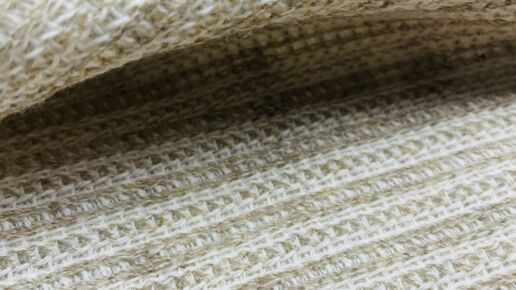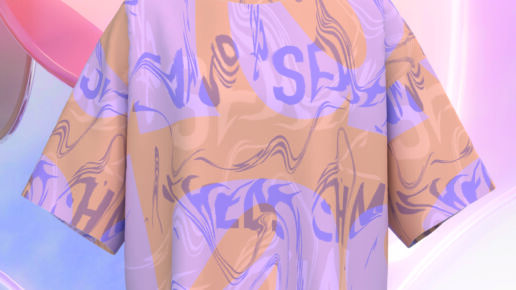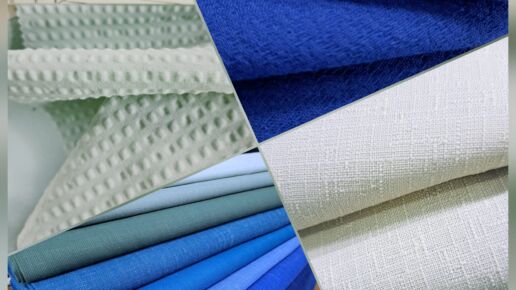From old to new: Pre-Loved is a biotextile concept in which new products are created from used post-consumer textile waste. In a unique production process, low-quality mixed textile fibres are transformed into a robust, paper- and leather-like material that is suitable for a variety of applications – from fashion to interior design and product design.
Designer Sarmite Polakova gives waste a new meaning in this context: instead of something negative, she perceives it as a surplus recyclable material that can, however, at the same time be a resource for the creation of something new – the focus here is on circularity: it is about the recyclability of the material; a product made by Studio Sarmite can be dissolved at the end of its life and the textile fibres can be used for the next production cycle. The lightweight material displays a processuality, revealing a new aesthetic and highlighting each previous life of a worn garment through nuances of colour and texture. It can feature marble-like patterns as well as hues accentuated by natural dyes.
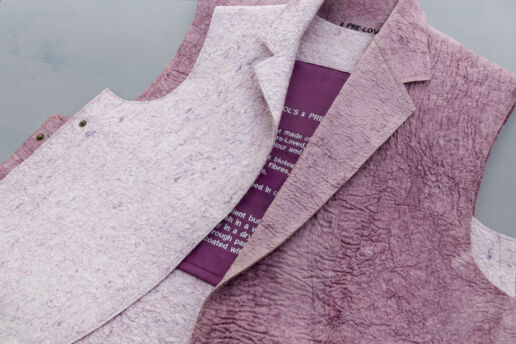
“The term ‘waste’ should be seen as a surplus rather than something negative and thus can be turned into a resource for creating something new.”
SARMITE POLAKOVA
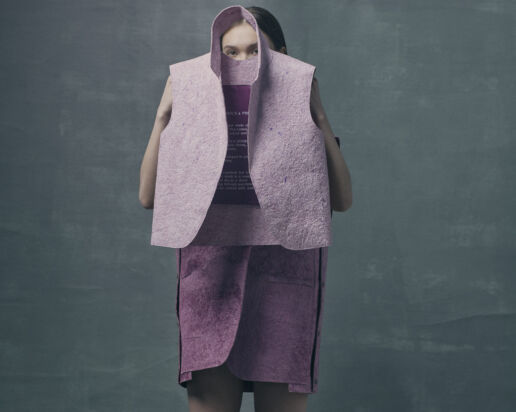
Cooperation is key – first Sarmite Polakova of Studio Sarmite teamed up with colour specialist Roua Alhalabi of Roua Atelier. The result of the collaboration is a groundbreaking dyeing method for blended fabrics based on natural pigments. The dyeing process is integrated into the production of the organic biotextiles and leads to a unique design language that gives room for surprising patterns and a certain playfulness. Moreover, the two designers have found a way to extract the dye during the recycling process of the textiles and use it for the next life cycle without the need for additional resources.
“Nature gives us a lot of resources that can be used in the natural dye industry. In fact, everything around us can be used to make color and support new materials. By using eco- riendly materials, we can become more sustainable and make a good impact.”
ROUA ALHALABI
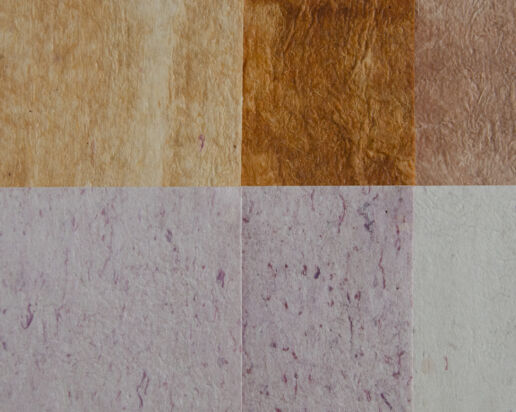
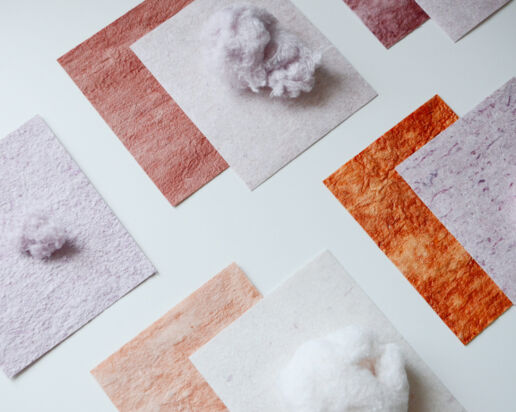
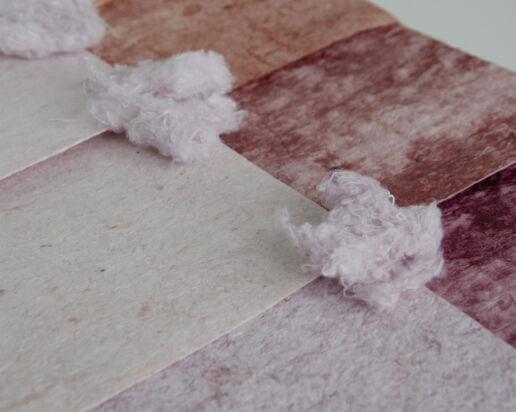
———————————————————————–
THIS ALSO MIGHT BE INTERESTING FOR YOU
Fabric Trends Spring.Summer 25 – Part VIII
7. May 2024
Their fabrics are light and contemporary and are characterised by tonal textures, minimal and subtle details and by seasonless neutral colours: all these elements make their product range up todate yet timeless.
DESIGN STUDIOS – SPRING.SUMMER 25 II
2. May 2024
The exhibited designs are characterised by the versatile use of craftsmanship and technology.
Fabric Trends Spring.Summer 25 – Part VII
30. April 2024
They specialize in crafting eco-sustainable fabrics and jerseys using in-house developed yarns.


